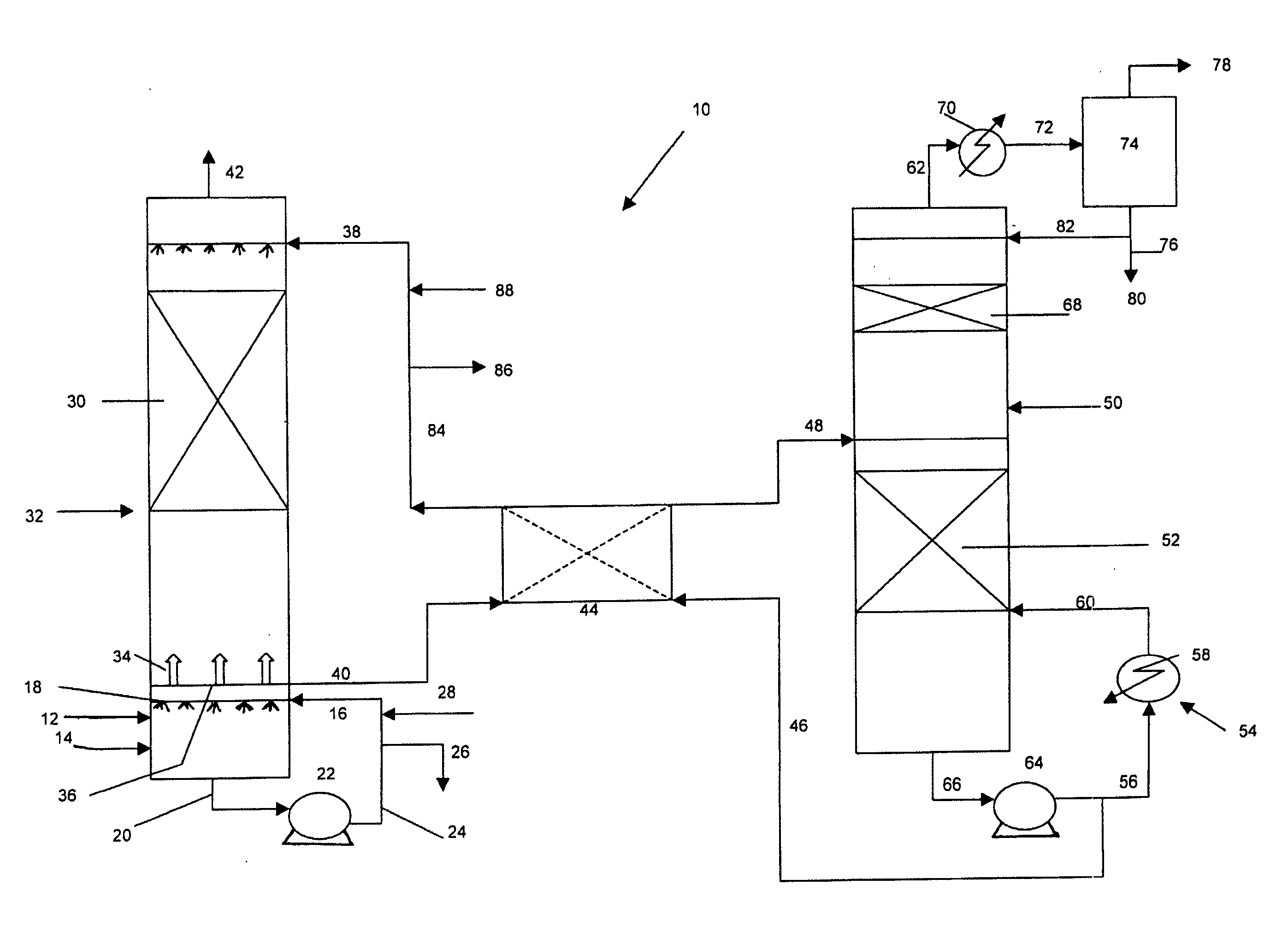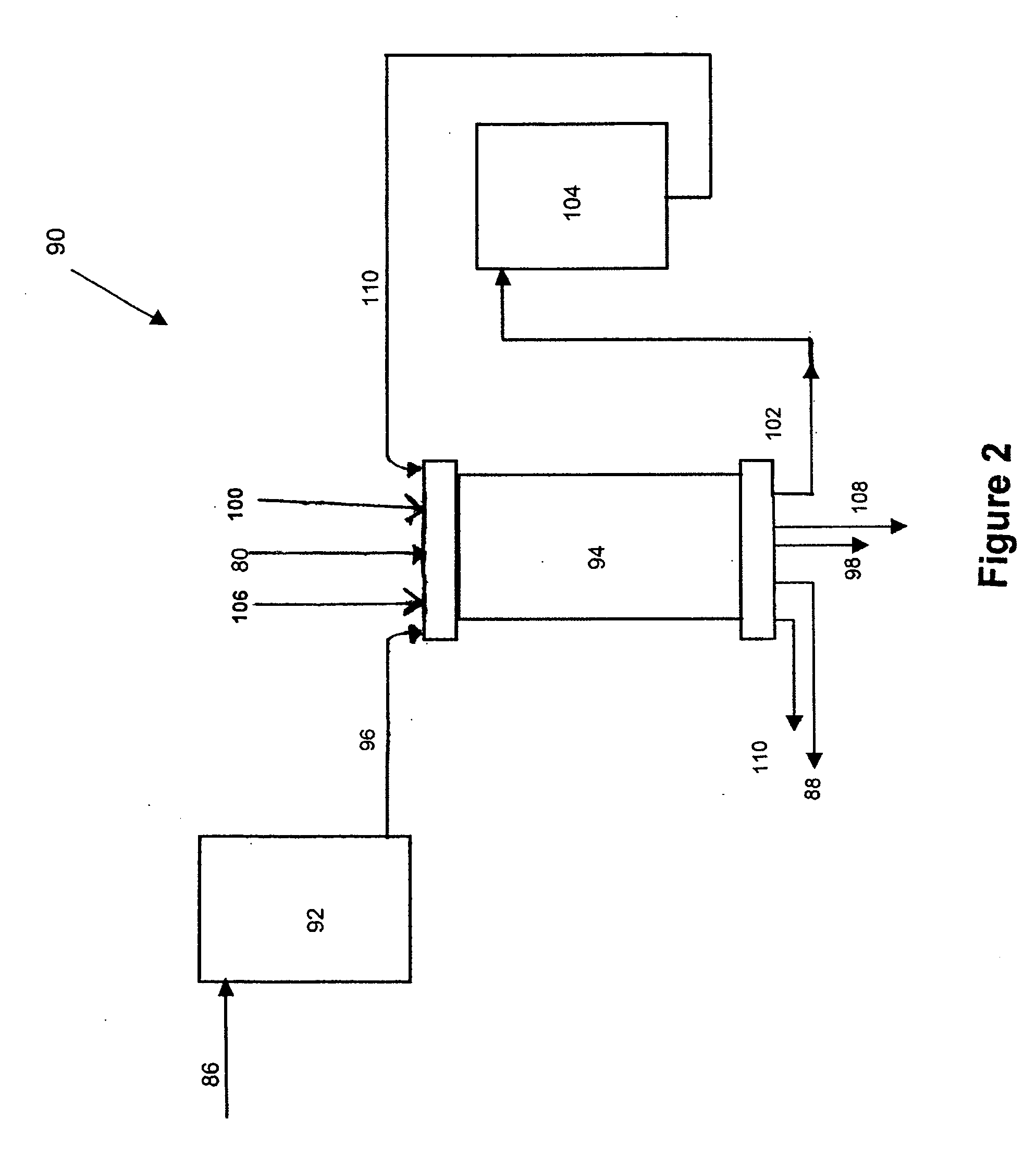Regeneration of ion exchangers that are used for salt removal from acid gas capture plants
a technology of ion exchanger and acid gas capture plant, which is applied in the direction of ion exchange, hydrogen sulfide, separation process, etc., can solve the problems of reducing the efficiency of amine solvent recovery, unable to react with and remove acid gas components as intended, and ion exchange medium or resin must be regenerated from time to time, so as to improve the efficiency of regenerating ion exchange resin, reduce the volume of water wash, and improve the effect o
- Summary
- Abstract
- Description
- Claims
- Application Information
AI Technical Summary
Benefits of technology
Problems solved by technology
Method used
Image
Examples
examples
[0111] The operation of the invention is illustrated by the following representative examples. As is apparent to those skilled in the art of ion exchange, many of the details of the examples may be changed while still practicing the invention described herein.
example
[0112] Operation of the invention was tested in a pilot plant. The experiments were performed for the removal of heat stable salts from a diamine SO2 absorbent (Cansolv™ Absorbent DM), having a concentration of 26.9% amine, 12.5% sulfate and 1.8% sulfite. The concentration of heat stable salt (sulfate) in this amine solvent was 1.36 moles / mole of amine. An ion exchange column with a diameter of 6 inches was filled to a height of 21.3 inches with Purolite™ A-830 weak base resin, corresponding to a resin bed volume (BV) of 10 liters. The ion exchange column was fed liquids from heated tanks by centrifugal pumps. Appropriate valves, pressure gauges, thermometers and rotameters were installed for safe and convenient operation of the unit. All the fluids were heated to 50° C. Synthetic reflux was prepared by bubbling SO2 gas into water until a nominal concentration of 1.5% was reached (pH=1.5).
[0113] Analysis for amine and anions were performed with ion chromatography while low sodium i...
PUM
| Property | Measurement | Unit |
|---|---|---|
| pKa | aaaaa | aaaaa |
| pKa | aaaaa | aaaaa |
| pKa | aaaaa | aaaaa |
Abstract
Description
Claims
Application Information
 Login to View More
Login to View More - R&D
- Intellectual Property
- Life Sciences
- Materials
- Tech Scout
- Unparalleled Data Quality
- Higher Quality Content
- 60% Fewer Hallucinations
Browse by: Latest US Patents, China's latest patents, Technical Efficacy Thesaurus, Application Domain, Technology Topic, Popular Technical Reports.
© 2025 PatSnap. All rights reserved.Legal|Privacy policy|Modern Slavery Act Transparency Statement|Sitemap|About US| Contact US: help@patsnap.com



